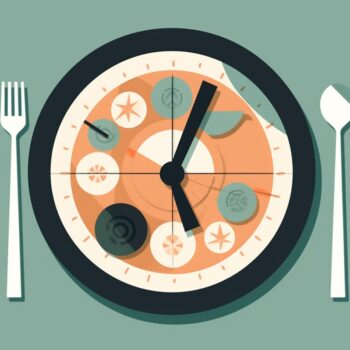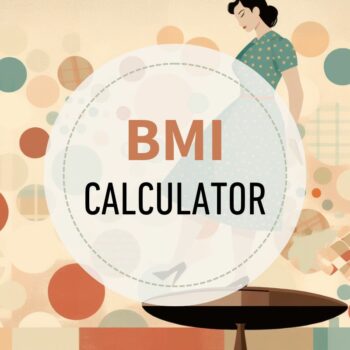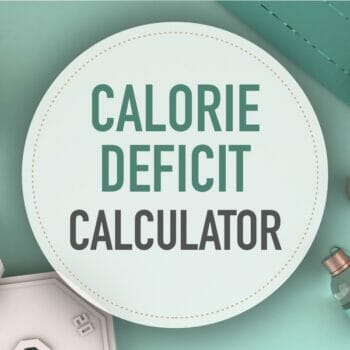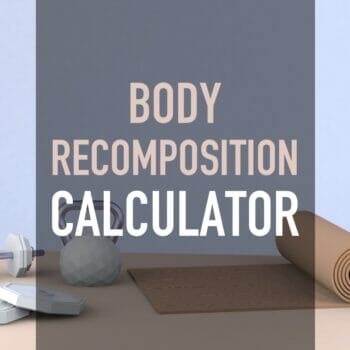Keto Macro Calculator
Calculate your ideal keto macro ratios for weight loss with this personalized calculator.
Now What?
Sticking to a Keto diet is challenging. We recommend that all beginners follow a structured meal plan until you get the hang of it.
- 🏃🏽♀️ The Keto cycle has a comprehensive set of plans.
- Get a customised Keto plan from CKD.
- CKD also has some free Keto recipe books here.
Is a keto diet right for you?
A keto diet can be difficult to stick to, but research suggests that it can help you lose weight faster than other diets.
- Are you training for fitness competitions?
- Are you losing weight for an event but have a shorter time window?
- Are you unable to lose weight eating normal levels of carbohydrates.
The Keto is a good option.
How does keto work?
- Keto became popular among bodybuilders to cut fat before competitions.
- When you’re on a ketogenic diet, your body will use fat as its primary energy source.
- You achieve this by limiting carbs and eating more fat.
- Without carbohydrates, the body converts food and body fat into ketones for energy.
Are calories still important with keto?
Yes. A calorie deficit is still required for weight loss.
How do I calculate macros for keto?
To calculate your keto diet macros, you must establish your estimated TDEE (total daily energy expenditure).
Your TDEE accurately measures how much energy you expend each day (at rest and when exercising).
The calculator above measures your TDEE and then creates the optimum macro ratio.
Setting a Calorie Deficit
To achieve fat loss, you need a calorie deficit.
We recommend 20% of your daily calories.
This is automatically applied when setting the Weight Goal to Lose in the above calculator.
Achieving Ketosis
Taking your body into ketosis requires very low levels of carbs.
The process can also be induced with Keto salts. However, they should be consumed in moderation.
Testing for Ketosis
You don’t have to guess whether or not your body is in ketosis.
There are several over-the-counter testing methods to determine your ketosis status.
You want to be in the range of 0.5 – 3.0 for blood ketones with the optimal fat-burning target of 2.0.
How many carbs do I eat on the Keto Diet?
The keto diet isn’t carb-free but just low in carbs.
5% of your total daily calories should be in the form of carbs.
This is 20-30 grams of carbohydrates per day for most people, depending on your stats and exercise-adjusted TDEE.
Net carbs
Carbs that don’t produce energy, like certain types of fiber, do not count toward your totals.
How much protein do I eat?
No more than 0.8 grams per pound of body weight should be consumed on a keto diet.
The calculator default is set at .7 grams per pound.
Adjust lower or higher if it’s challenging to reach your macro targets.
Some macro calculators recommend higher fat (but less protein). However, protein is essential for muscle repair and preservation.
How much fat do I eat on Keto?
After calculating carbs and protein, your remaining calories should come from fat.
Example: A moderately active woman, 30 years old, 5’5″, and 180 pounds, would have a weight loss TDEE of 1908 calories.
Here are her keto macros:
- Protein: 126 grams (27%)
- Fat: 145 grams (69%)
- Carbs: 24 grams (5%)
How much fiber do I need while doing keto?
Fiber is essential for a healthy digestive system.
You still should consume green leafy and other low-carb veggies while on the keto diet.
Fiber supplements may be necessary. Psyllium husks are an excellent natural fiber choice if you aren’t getting enough.
The essential Keto-Friendly foods
These foods will help you reach your keto macros.
- Avocado
- Ground flax seed
- Coconut oil
- Olive oil
- Grassfed butter
- Dark meat chicken
- Eggs
- Steak
- Pork
- Lamb
- Bacon
- Sour cream
- Hard cheeses
- Nuts (watch the carbs)
- Seeds (watch the carbs)
- Peanut Butter
- Almond butter
- Leafy greens and other low-carb veggies like cucumber, celery, broccoli, cauliflower, sprouts, etc.
Symptoms you may experience with a ketogenic diet
There is an adjustment period when starting a ketogenic diet. You may experience some of the following symptoms:
- Brain fog
Your brain loves glucose and consumes a lot of it. - Lack of energy
Feeling tired and lethargic is an adjustment to using fat for energy instead of sugar. - Lack of strength during workouts
You may tire more quickly without carbs replenishing your muscles’ glycogen supplies. - Cravings
Your brain will not be happy and will want you to eat carbs. Be prepared for some intense cravings when you start.
Do you have to track macros on keto?
It’s possible to go into ketosis without tracking macros, but tracking macros ensures the following three things:
- You aren’t eating too many carbs.
- You are eating the right amount of protein.
- You are eating the right amount of calories for weight loss.
How long should I be on the keto diet?
Keto dieting is suitable for short-term fat loss but is difficult to sustain long-term.
After reaching your initial weight loss goals, you should transition to a normalized set of macros.
Don’t know where to start?
- You can get started in 60 minutes with the right app and plan.
- Keto cycle has personalized meal plans and step-by-step instructions.
Sources
- Yancy, W. S., Olsen, M. K., Guyton, J. R., Bakst, R. P., & Westman, E. C. (2004). A low-carbohydrate, ketogenic diet versus a low-fat diet to treat obesity and hyperlipidemia. A randomized, controlled trial. Annals of internal medicine, 140(10), 769-777. Ref
- Mifflin, M. D., St Jeor, S. T., Hill, L. A., Scott, B. J., Daugherty, S. A., & Koh, Y. O. (1990). A new predictive equation for resting energy expenditure in healthy individuals. The American Journal of Clinical Nutrition, 51 (2), 241-247. URL http://www.ajcn.org/content/51/2/241.abstract
- Yancy, W. S., Foy, M., Chalecki, A. M., Vernon, M. C., & Westman, E. C. (2005). A low-carbohydrate, ketogenic diet to treat type 2 diabetes. Nutrition & Metabolism, 2(1), 34. Study link
87 Comments


 Menopause Macro Calculator
Menopause Macro Calculator Intermittent Fasting Calculator
Intermittent Fasting Calculator BMI Calculator
BMI Calculator Calorie Deficit Calculator
Calorie Deficit Calculator Body Recomposition Calculator
Body Recomposition Calculator
I have never entered a comment on any website, etc… but I actually smiled when I read your “disclaimer”…Some advocates of keto dieting say people should eat this way for life, but we don’t see that as a realistic way to eat long term. Besides, life is far too short to never enjoy cake, pizza, cookies and a nice glass of wine. Moderation and balance always win over restriction. Thank you for that! This is the most “real” advice I have seen in all my research on the Keto diet. Your real advice is appreciated!
Thanks, Michelle! We like to keep it real here. Glad you found it useful.
I am 243 pounds. I am trying to get to 200-215 pounds. Will the ketogenic diet work for me? I train about 5-6 days a week. I want to compete in bodybuilding in the near future. Is this the best route I should go to? Just wondering.
Hi Armando, Whether you do keto or normal macros, what matters is maintaining a safe calorie deficit. It’s most important to establish an accurate TDEE and then factor your deficit from that point of reference.
Hi went on the keto diet on February 5th and had lost 40 pounds well I was taking the medication friend I mean and now I’m not taking that after the three months and don’t seem to have as much energy as it had given me and I have slipped and went back to just kind of eating watching well no not watching what I’m eating and I can’t figure out actually the carbs and stuff on the Marco and I’m kind of really confused I was confused at first and didn’t eat much so I don’t know what to do
Hi Joanne, The macro calculator will give you the amounts of each macro you should be eating. With keto, the carbs are net carbs.
i just wanted to thank you. i especially like reading your thoughts that keto should be used no more than 2 month. I am almost 60, just wanting to lose a little fat. I actually gave myself a month in my head. i’m always trying to watch what i eat and exercise regularly. Every so often i feel like i need a kick.
How do I figure out what percentages of protein, fats carbs? Where are these directions printed? Yes it’s according to my body wt. but what %’s?
Hi Patricia, The percentages are given in the calculator and you can use a food tracking app to then see how the food you eat lines up with the recommendations macro-wise.
I am 50 pounds overweight and I want to track my macros for weight loss. Can I still us the macro calculator for my ideal calories per day? also what other steps do you recommend I do? any information will be helpful since I’m not sure were to start first. my goal is to get down to my wealthy weight which is 185 pounds. I’m 6’0 at 240 pounds currently.
Hi Darryl, You are just within the acceptable amount of fat tissue weight to use the calculator. As far as getting started with keto, the internet abounds with some good resources. On this site, we primarily focus on losing weight with a balanced set of macros.
For the keto calculator is this total carbs or net carbs?
Thanks
Total carbs. We normally find that the non-digestible fiber provides a ‘buffer’ against going over on your carb targets. So if your shooting for… say… 30 g of carb. You might actually eat 35 grams… but some of this might be fiber… so you’ll still be in your limits.
If we target net carbs, it can be very challenging meeting your targets.
How much saturated fat is typical on a keto diet and how do you calculate it for daily macros? Do you add it into the count for FAT?
This would vary depending on how well your body handles saturated fat and your current triglyceride and cholesterol levels. It is included in your total fat grams, yes. One of the problems with the keto diet is people fail to balance their fatty acid profile and it can become out of balance when eating fat at the levels recommended.
hihi
just wondering should i be using the lean mass no. or body fat % no. on the keto macro calculator please thanks????
from Australia
If you are using the lean mass formula, you should enter your body fat percentage.
Other sites I’ve been reading have stated that you need to eat approx .8 grams of protein per kilogram of body weight. Not per pound. Which is correct?
If you’re obese then .8 gram per kilo is more realistic, if you are normal weight with a few extra pounds to lose then .8 per pound is the target. Protein requirements are most accurately determined by lean mass so a lot of fat tissue weight skews the.8 per pound calculation.
Thanks for the clarification.
im so new to this, but so motivate. I’m having trouble understanding how much to eat, when to eat, and what to eat.
Hi Amy, The calculator here should give you a great starting point.
I love the details you provide and I especially like how you’ve covered little bits of all the key areas. The concept of macros often seems confusing when people are first starting keto, but it doesn’t have to be.